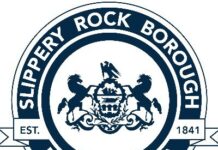SRU professors Dr. Jack Livingston and Dr. Julie Snow are putting their finishing touches on their $175,000 grant from the National Science Foundation (NSF) in order to publish a program that will allow users to better understand their local airsheds.
The goal of the grant was to create a free and publicly available software that enables people to analyze and use complex models of air movement to answer regional environmental questions, according to Dr. Jack Livingston, associate professor and chair of the SRU department of Geography, Geology, and the Environment.
“An airshed is the area of the Earth’s surface that contributes pollutants or anything to a point down wind,” Livingston explained. “So, for any given point on the Earth’s surface we can say what area contributed to it over a period of time. And what that allows someone to say is, ‘My air is bad, who caused it?’”
Associate professor of meteorology Dr. Julie Snow stated that the target audience is mainly political leaders who need to keep track of the regional amounts of carbon dioxide, particulate matter levels, and ozone levels, as well as changes climate in climate.
“If I’m breathing air that’s toxic, I’d like to know who is making it toxic so that I could take action and improve the air that I’m breathing,” Snow said. “Most people probably don’t even probably think about it like that. Most people probably don’t think about the air they’re breathing, but I would suggest that they should.”
As an example, Livingston explained that everyday Pittsburgh has to report the city’s air quality to the US Environmental Protection Agency (EPA). If the city doesn’t meet the EPA’s standards, they may face punishment. The problem is that Pittsburgh isn’t always what causes the pollution, but rather the pollution often travels through the air from somewhere else. The program allows users to look at diagrams of the air’s long-term changes as well as day-to-day motion, which allow users to see where pollutants may be traveling from.
“People really need to understand regional air quality,” Livingston said. “You hear things about climate change and these are big picture issues, this is the globe. The reality is that we live in regions, and we need to understand what Cleveland does to us, and what we do to Buffalo. Our ability to understand regional air is becoming more and more important.”
The data comes from the National Oceanic and Atmospheric Administration (NEAA) Hysplit, which provides archives of atmospheric data from all around the world, spanning multiple decades.
“The pieces have existed already, but they were very difficult to use,” Livingston said. “It’s like so many things in science, somebody sat down and created a very complex model that works very well with this, but you really have to know that model in order to make it work. So it’s not allowing the average person can do it. What we’re doing is making that part easy.”
Livingston and Snow’s computer program will holds the tentative name of the GGE Hysplit Helper. It works by entering a small amount of information about what the user wants to learn about, and then the program will send the information to a GIS program, which is mapping software that is commonly used by the government. Snow hopes that the program will be downloadable on the SRU homepage, but plans are still not finalized.
The three-year $175,000 NSF grant was awarded to Livingston, Snow, and Research Associate in the Department of Environmental Toxicology at the University of California, Santa Cruz Dr. Peter Weiss-Penzias in August 2009. Other than needing to debug the program, Snow expects that the grant will be finished before its February 2013 deadline.
The grant money was mainly used to fund the Research in Undergraduate Institutions program, which allows undergraduates to get paid for helping with research. Livingston and Snow recruited six SRU students, including chemistry, computer science, and environmental studies majors.
Livingston and Snow agreed that after spending so much time creating the program, they are looking forward to using it on a new project that may potentially funded by the NSF. One of their current ideas is to track how windborn-seeds are able to travel and colonize on distant islands..
Part 3 of the series will cover a SRU professor’s research on fossils from the Permian period.







